Nishijima Katsuyuki
1945 ~Nishijima Katsuyuki, born in 1945 in Yamaguchi Prefecture, is recognized as one of the most prominent and representative Sōsaku Hanga artists of the late 20th century. His art draws heavily from traditional ukiyo-e and the shin-hanga movement,
showcasing themes and principles that blend the two styles.
He began his artistic journey at the age of 19, training at the Mikumo publishing house in Kyoto from 1964 to 1968. During this period, he explored various forms of printing and stencil dyeing before dedicating himself to woodblock printmaking in the Sōsaku
Hanga style. He`s works often depict timeless, romantic, and rural landscapes without human presence, focusing on traditional townhouses (minka). They evoke a nostalgic spirit, drawing attention to old wooden buildings, rain, snow, and wind. His mastery of
composition and the interplay of light and color distinguish his works, offering a unique contemporary take on classic series like the Sixty-Nine Stations of the Kisokaidō.
His art has been exhibited throughout Japan, Europe, and the United States, earning him a place among the most celebrated contemporary Japanese artists.
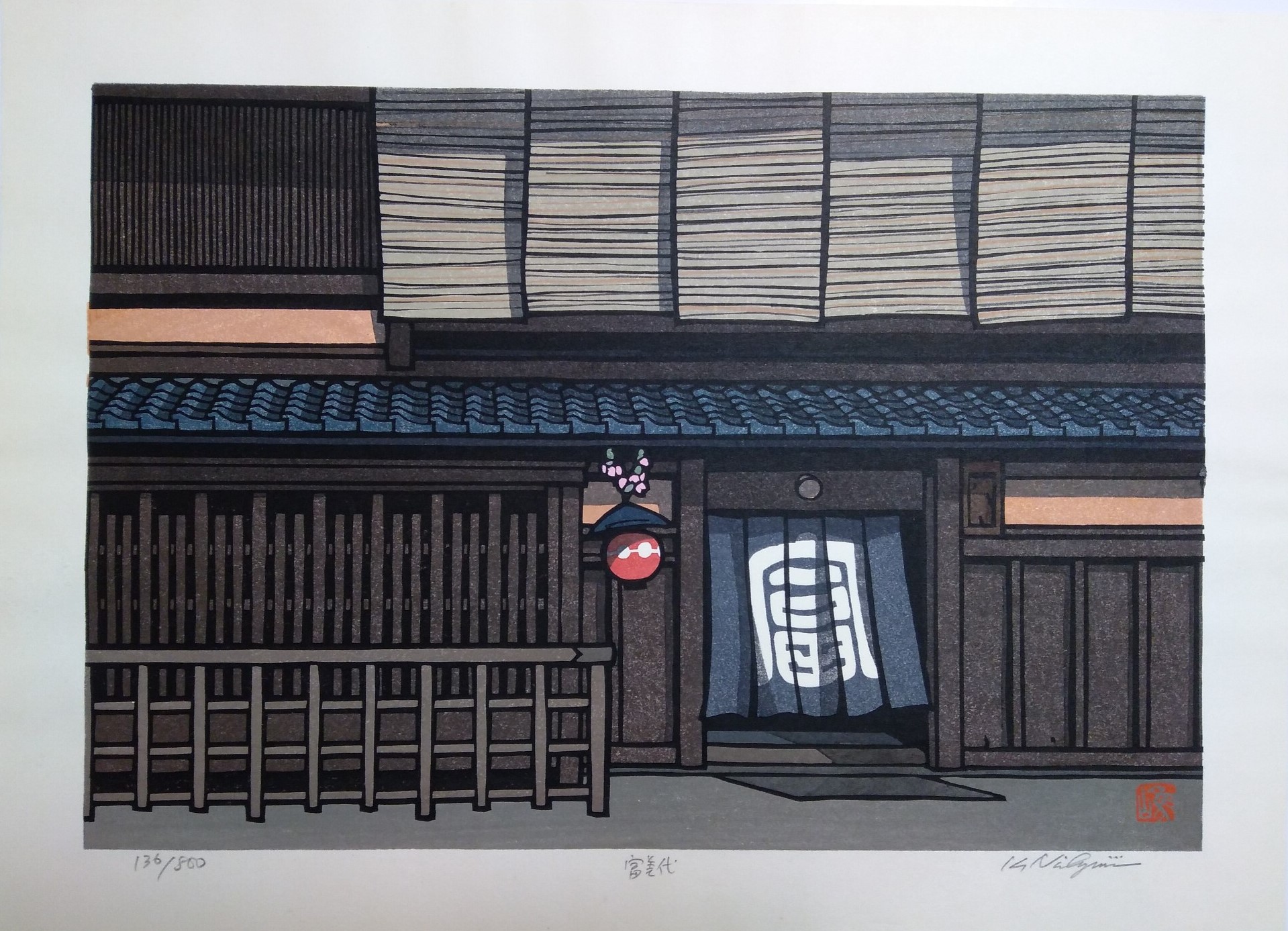 Not for Sale
Not for Sale
The entrance of the traditional Japanese restaurants Tomiyodai, located in Higashiyama, Kyōtō, part of the famous Gion district, a lost in time area where Geisha walking in their old fashioned Kimono visiting traditional restaurants and
boutiques can be noticed even nowadays. Tomiyodai is a more than 300 years old tea house or, as the local language names it, a Chaya which gathers Geisha and geisha apprentices Maiko, so that they can perform dance, poetry and acting for customer dining
at the place.
Having access to this kind of place can be really hard, usually being refused if not previously introduced by by another customer of it.
 Not for Sale
Not for Sale
The entrance of a traditional townhouse (machiya), probably a sweetshop, in the Sawaragi block of Kyōtō. This old fashioned block is situated in the Kamigyō district famous for the Kyōtō Imperial Palace (Kyōtō gyōen) and for its traditional Japanese gardens and wooden townhouse.
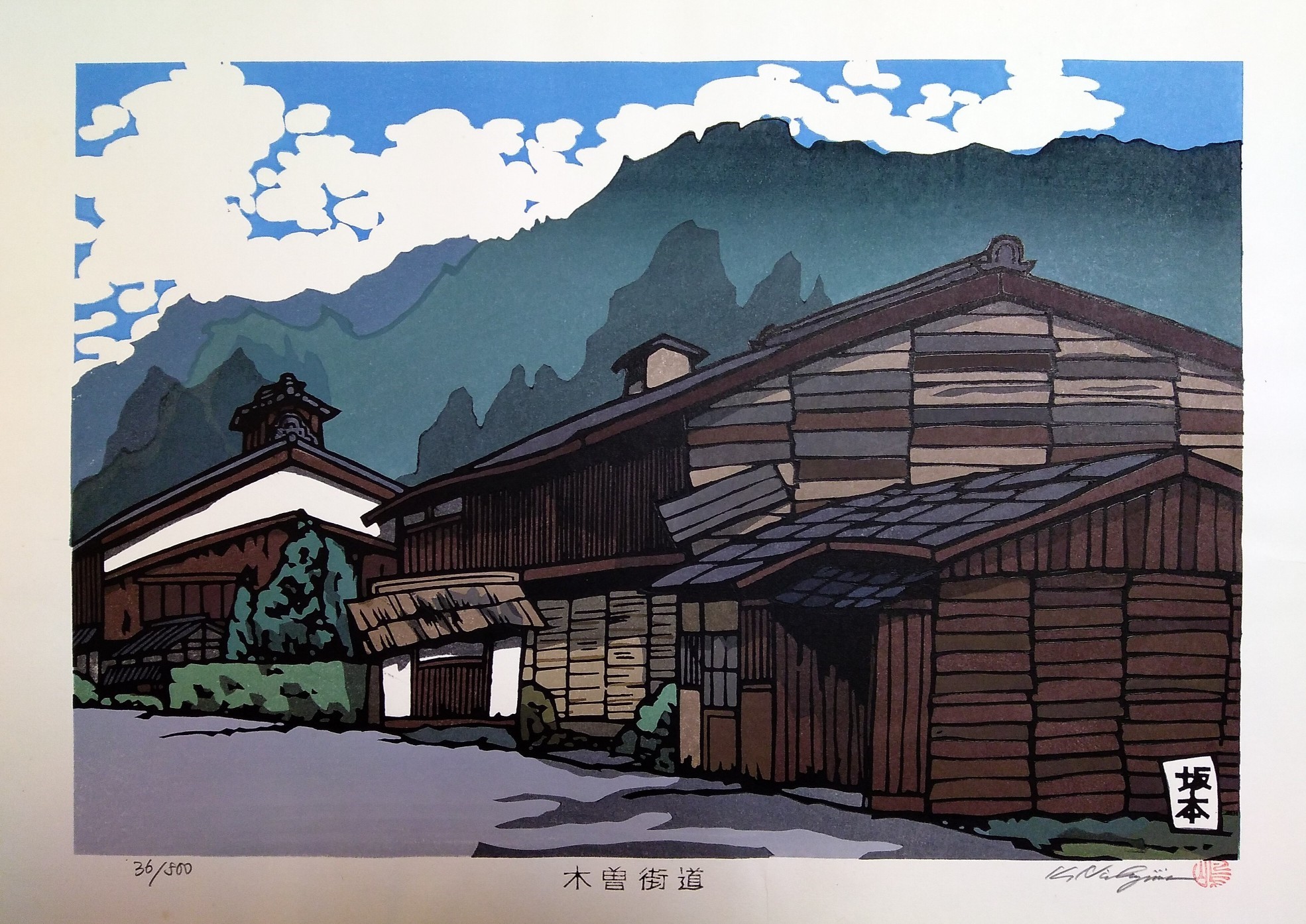 Not for Sale
Not for Sale
A view of the rural relay station of Sakamoto: leaving from Edō is the 17th of the Kisokaidō.
The Kisokaidō, also known as Nakasendō, was one of the five route (gokaidō), which in feudal Japan conneted Edō with the Imperial Capital Kyōtō across the Japanese Alps.
It spread along the Kiso River, sided by the Kiso Mountains, hence its name.
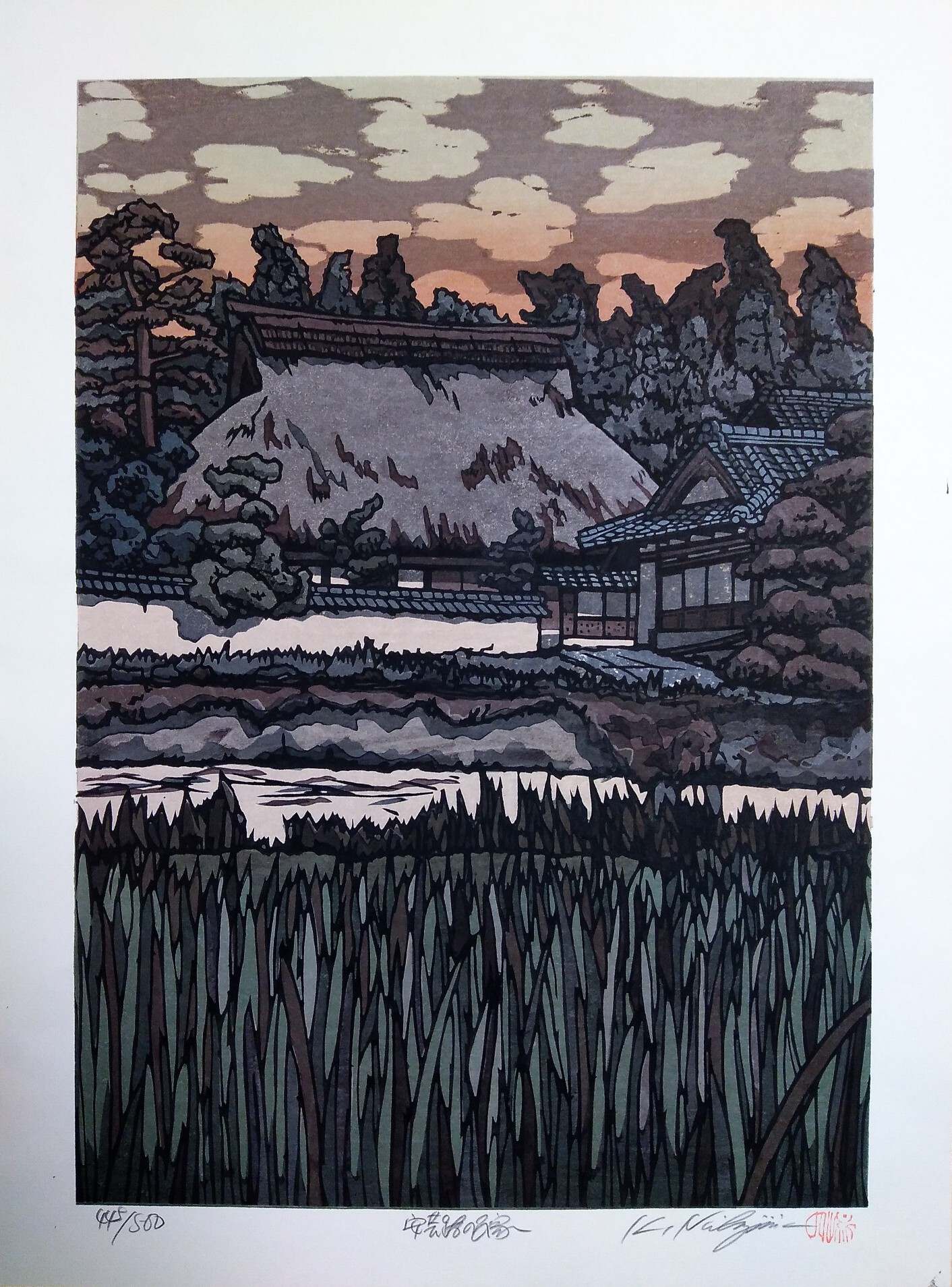 Not for Sale
Not for Sale
A traditional Japanese minka, or townhouse, emerges on what should be the Aki road, connecting the two prefecures of Hiroshima and Yamaguchi.
Today they are crossed by the Ajiki train line (Ajiki liner) used every day by commuters moving across the two prefecures.
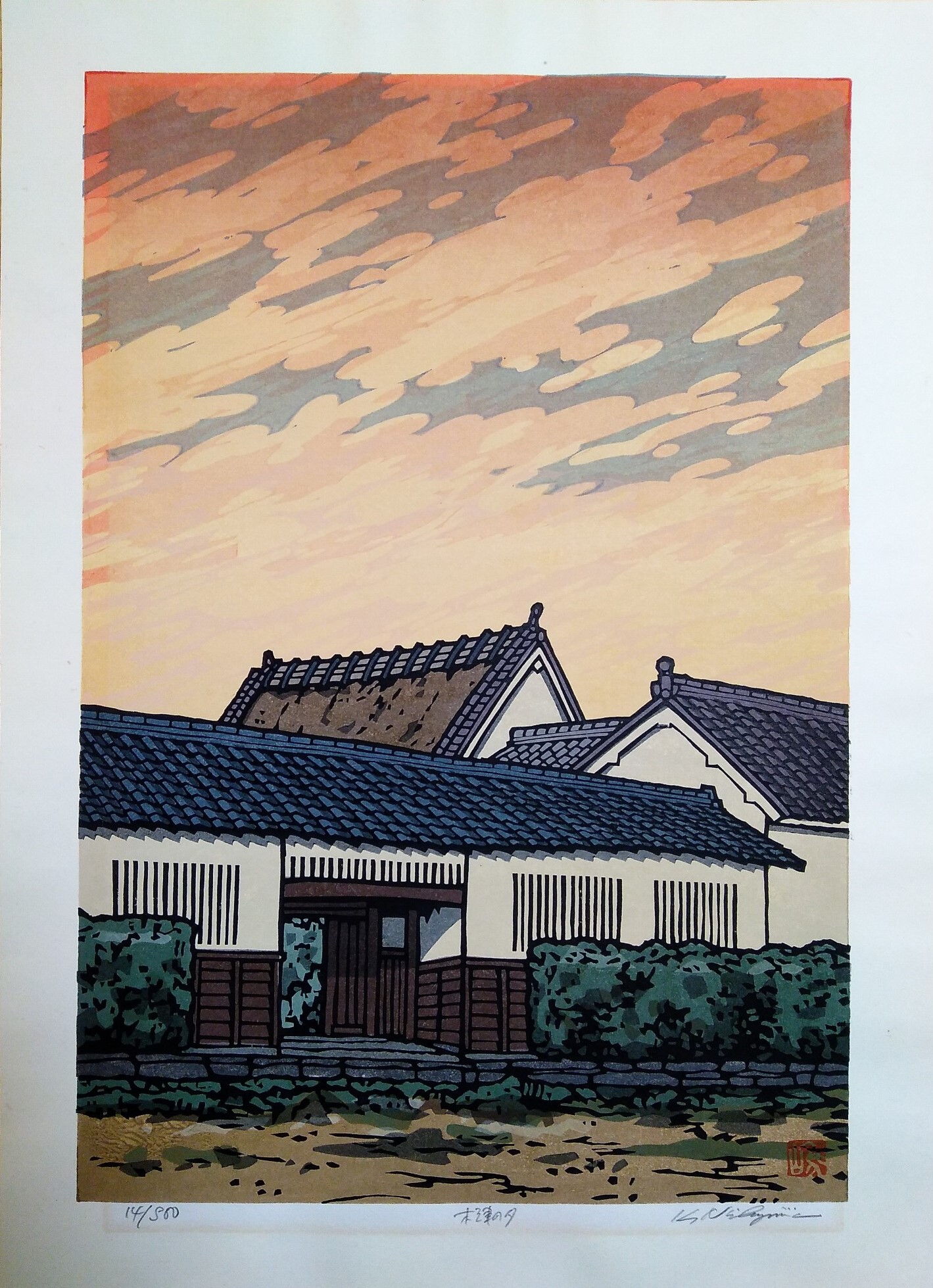 Not for Sale
Not for Sale
A beautiful sunset backing some townhouse in Kizu, Kyōtō prefecture.
Set in Kizugawa city, it is actually the main station of the area, connecting the four cities of Kyōtō, Ōsaka (to Kyōbashi station), Nara and Kameyama through the West Japan Railroad line. It flanks the Kizugawa River
that has been used as a transportation route since the 3rd century, and was the starting point of a sea route connecting Yamato and the Seto Inland Sea (Seto uchi) through the Yodogawa River.
During the Nara period, Kizu prospered as a landing port for timber, mainly used for building up capital cities such as Heijōkyō or Heiankyō.
The name "Kizu" has its origin in it, being composed by the two ideograms of wood "ki" and harbour "zu".
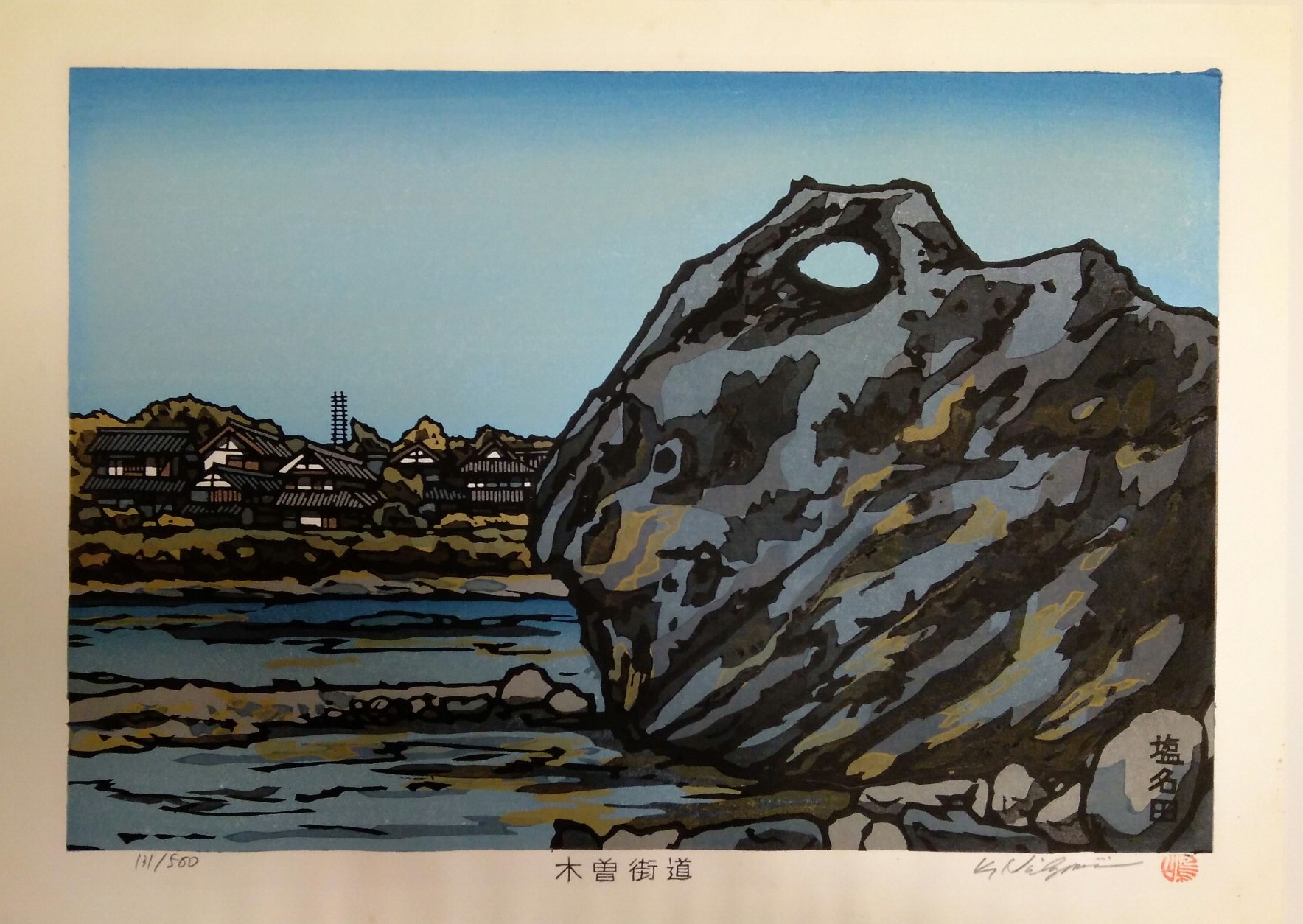 Not for Sale
Not for Sale
A view of the rural relay station of Shionada which during the Edo era was the 23rd station of the famous Kisokaidō (Nakasendō) road.
Nowadays it represents a small fraction of Saku city in Nagano prefecture and it is easy recognisable from a stone of the unique shape: the "Chikumagawa funatsunagi ishi", or Funatsunagi stone of the Chikuma river.
As said above this stone is unique in its shape and gender but not in its function. Funatsugi literraly means "that connect, tie or link to a ship" and it self-explains why these kind of stones were set in proximity
of a river for: secure a ship when the river overflows its banks.
The Chikuma river was one of this kind. Flood after flood it dragged away its bridge leaving the traveller with no other choice but crossing it by foot or ship.
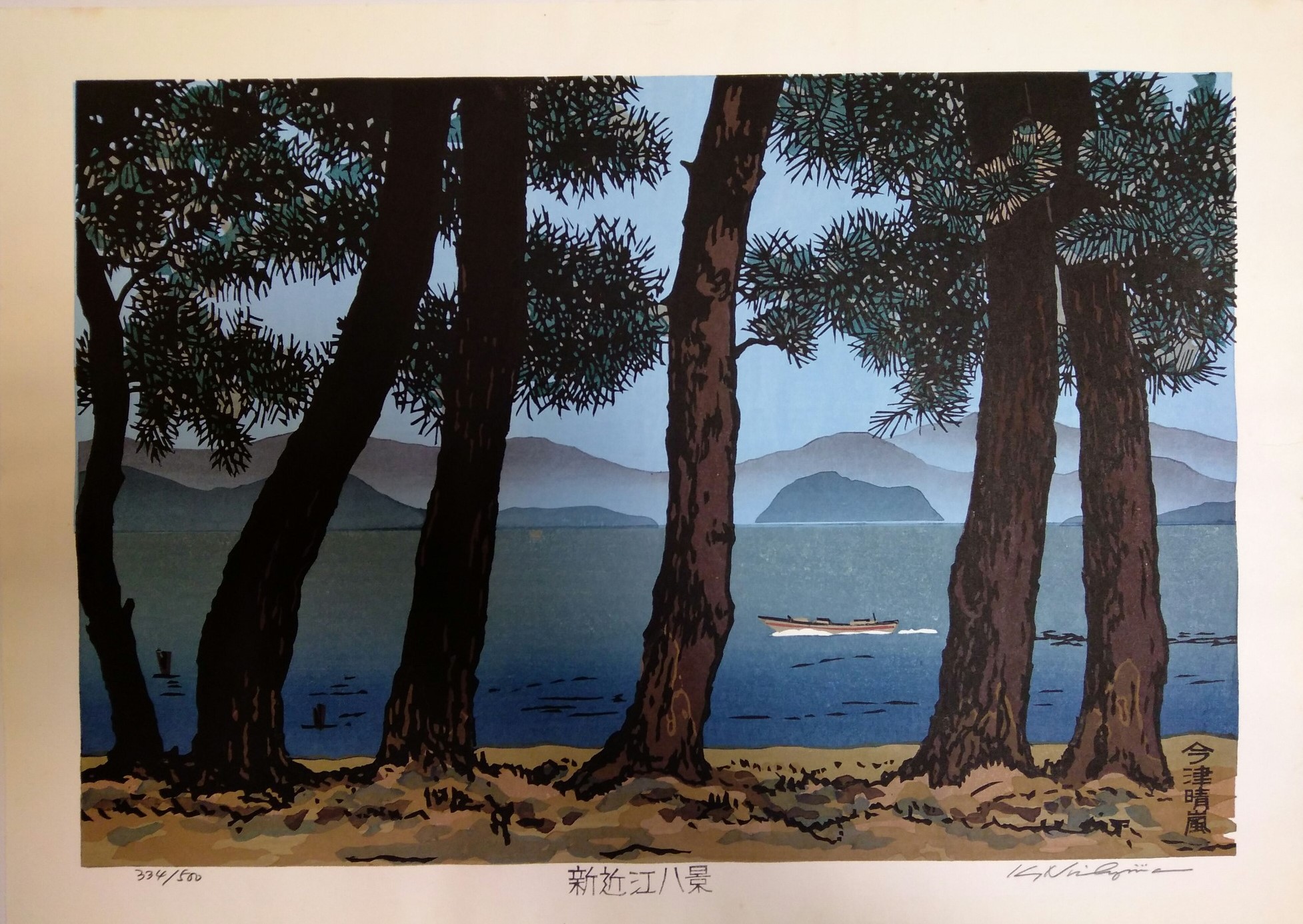 Not for Sale
Not for Sale
Imazuchō was a town that once existed in the former Takashima district of Shiga Prefecture. It was situated on the northwest shore of Lake Biwa
and was part of the Kosei region. It began to develop as the central hub of Takashima district after the establishment of an army garrison during the Meiji era.
In 2005 it merged with other areas to form the city of Takashima, and the town`s name remains as Takashima City`s Imazuchō.
Imazuchō hosts approximately 130 wild cherry blossom trees known as "Sakura Edohigan". They are renowed for theyr longevity and bloom beautifully around early April each year.
Particularly noteworthy is the Edohigan cherry tree at Sanamidera temple, beloved by locals and referred to as the "Gyoki Sakura", name that probably recall a Buddhist monk lived
centuries ago, during the Nara era.
 Not for Sale
Not for Sale
The print depicts a serene and traditional Japanese streetscape in Uda, near Nara, characterized by a row of old wooden buildings with sharply defined, dark blue-tiled roofs that
contrast strikingly against a bright, calm sky.
Uda is a city located in the northeast of Nara Prefecture known for its rich historical and natural heritage. One of the most famous places in Uda is Murōji Temple, situated at the foot of Mount Murō.
The perspective is drawn along the length of the street, leading the viewer`s eye through the scene, which is rendered with a meticulous attention to architectural details. The overall ambiance evokes
a sense of quiet and historical depth, typical of a well-preserved old town area in Japan.
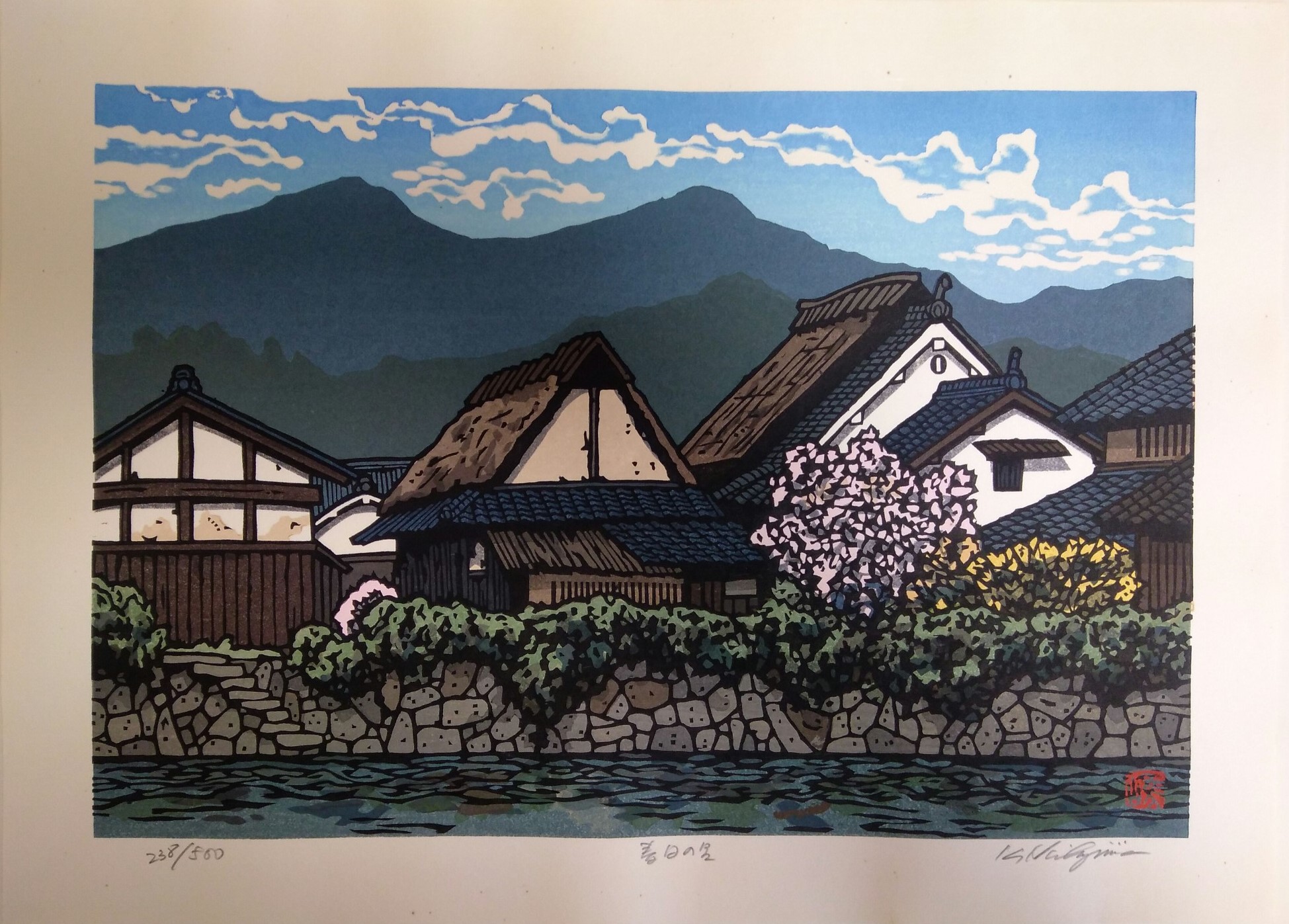 Not for Sale
Not for Sale
